Free Dermal Fat Graft for Reconstruction of Soft Tissue Defects in the Maxillofacial Region
Abstract
Introduction
Patients and Methods
- (1)
- The measurement of the defect’s depth (DD)Through axial section, a reference point was determined and each half of patient’s face was measured with a linear measurement. The measurements started in the defect side from the deepest point of the soft tissue defect into the midline.The unaffected or normal side was measured at the same horizontal plane with the opposite side from the most lateral soft tissue point into the midline. The difference between these 2 sides represents the defect’s depth (DD).
- (2)
- Determination of overcorrection in a numeric value (OV)In our study, the overcorrection percentage is 10%-15% from defect’s depth. The defect’s depth (DD) was multiplied by 0.15 to convert the percentage of overcorrection into a numeric value.
- (3)
- Determination of total graft thickness (TT).The total graft thickness that was needed for each patient was determined by the following formula:Total graft thickness(TT) = defect’s depth(DD) + overcorrection numeric value(OV).The evaluation of patient’s improvements was done through 2 methods:
- (a)
- Subjective evaluation with visual analog scale with 1 = least satisfied and 10 = most satisfied result. Patient’s and 2 surgeons’ satisfactions regarding depression filling, facial symmetry, and the overall aesthetic improvements 6 months postoperatively were evaluated.
- (b)
- Objective evaluation by the clinical examination 1 week, 1 month, 3 months, and 6 months postoperatively. The patients were examined for any sign of infection, liquefaction, rate of graft resorption, and facial symmetry. CBCT scans were used to evaluate linear measurements of augmented region 6 months postoperatively and compare it with the preoperative defect side linear measurements.
Surgical Technique
Results
Discussion
Conclusion
Funding
Conflicts of Interest
References
- Kadam, D.; Pillai, V.; Bhandary, S.; Hukkeri, R.Y.; Kadam, M. Facial contour deformity correction with microvascular flaps based on the 3-dimentional template and facial moulage. Indian J Plast Surg. 2013, 46, 521–528. [Google Scholar] [CrossRef] [PubMed]
- Baum, S.H.; Pförtner, R.; Ladwein, F.; Schmeling, C.; Rieger, G.; Mohr, C. Use of dermis-fat grafts in the prevention of Frey’s syndrome after parotidectomy. J Craniomaxillofac Surg. 2016, 44, 301–308. [Google Scholar] [CrossRef] [PubMed]
- Kumar, N.G.; Thapliyal, G.K. Free dermal fat graft for restoration of soft tissue defects in maxillofacial surgery. J Maxillofac Oral Surg. 2012, 11, 319–322. [Google Scholar] [CrossRef] [PubMed][Green Version]
- Honeybrook, A.; Athavale, S.M.; Rangarajan, S.V.; Rohde, S.L.; Netterville, J.L. Free dermal fat graft reconstruction of the head and neck: an alternate reconstructive option. Am J Otolaryngol Head Neck Med Surg. 2017, 38, 291–296. [Google Scholar] [CrossRef]
- Larossa, D.; Whitaker, L.; Mordick, T. Soft-tissue reconstruction of the face: a comparison of dermal-fat grafting and vascularized tissue transfer. Ann Plast Surg. 1992, 29, 390–396. [Google Scholar]
- Elbarbary, A.S.; Nasser, S. Implementing fat grafting in the management of complex facial reconstructive patients. Egypt J Plast Reconstr Surg. 2011, 35, 55–63. [Google Scholar]
- Kempf, K.K.; Seyfer, A.E. Facial defect augmentation with a dermal-fat graft. Oral Surg Oral Med Oral Pathol. 1985, 59, 340–343. [Google Scholar] [CrossRef] [PubMed]
- Papel, I.D.; Frodel, J.; Holt, G.; Larrabee, W.; Nachlas, N.; Park, S. Facial Plastic and Reconstructive Surgery, 4th ed.; Thieme Medical Publishers, Inc.: New York/Stuttgart/Delhi/Rio de Janeiro, 2016. [Google Scholar]
- Davis, R.E.; Guida, R.A.; Cook, T.A. Autologous free dermal fat graft: reconstruction of facial contour defects. Arch Otolaryngol Head Neck Surg. 1995, 121, 95–100. [Google Scholar] [PubMed]
- Muresan, C.; Brownstein, G.M.; Shureih, S.F. Abdominoplastyderived dermal-fat graft augmentation gluteoplasty. Aesthetic Surg J. 2014, 34, 1234–1243. [Google Scholar] [CrossRef]
- Lee, M.S.; Chung, D.H.; Lee, J.W.; Cha, K.S. Assessing soft-tissue characteristics of facial asymmetry with photographs. Am J Orthod Dentofac Orthop. 2010, 138, 23–31. [Google Scholar] [CrossRef]
- Fasolis, M.; Zavattero, E.; Iaquinta, C.; Berrone, S. Dermofat graft after superficial parotidectomy to prevent Frey syndrome and depressed deformity. J Craniofac Surg. 2013, 24, 1260–1262. [Google Scholar] [CrossRef] [PubMed]
- Little, J.W. Applications of the classic dermal fat graft in primary and secondary facial rejuvenation. Plast Reconstr Surg. 2002, 109, 788. [Google Scholar] [CrossRef] [PubMed]
- Inchingolo, F.; Tatullo, M.; Pacifici, A.; et al. Use of dermal-fat grafts in the post-oncological reconstructive surgery of atrophies in the zygomatic region: clinical evaluations in the patients undergone to previous radiation therapy. Head Face Med. 2012, 8, 4–9. [Google Scholar] [CrossRef]
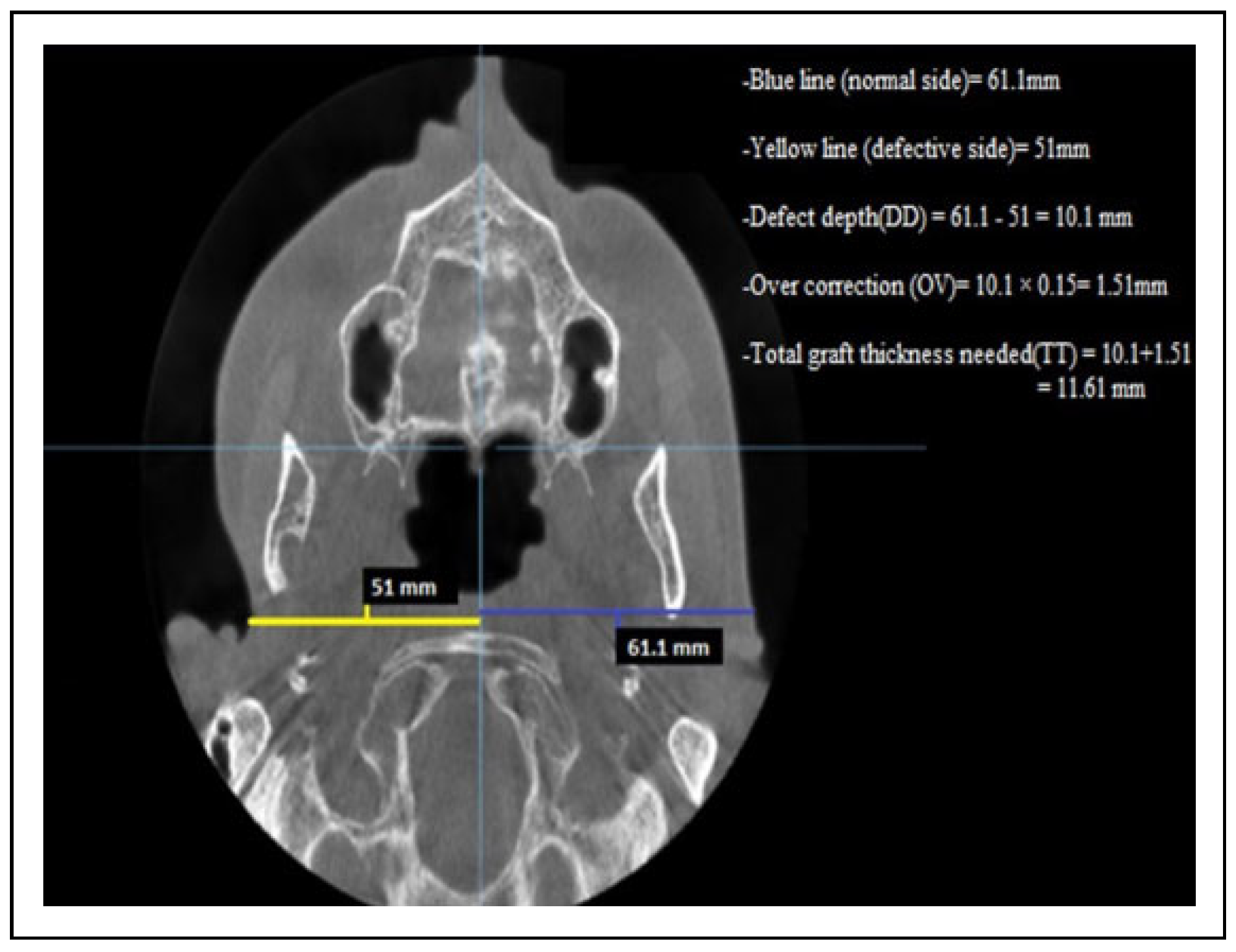

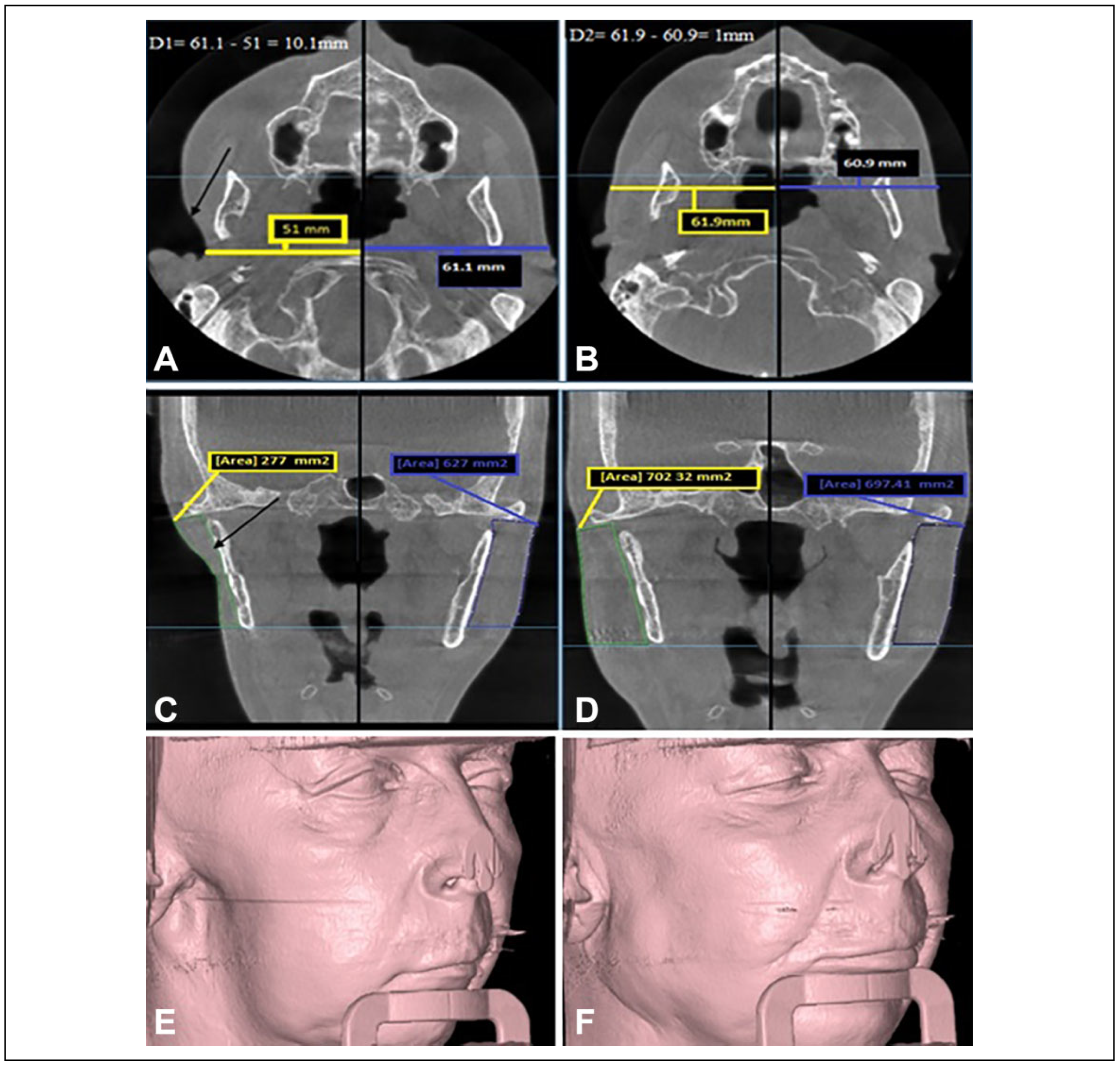
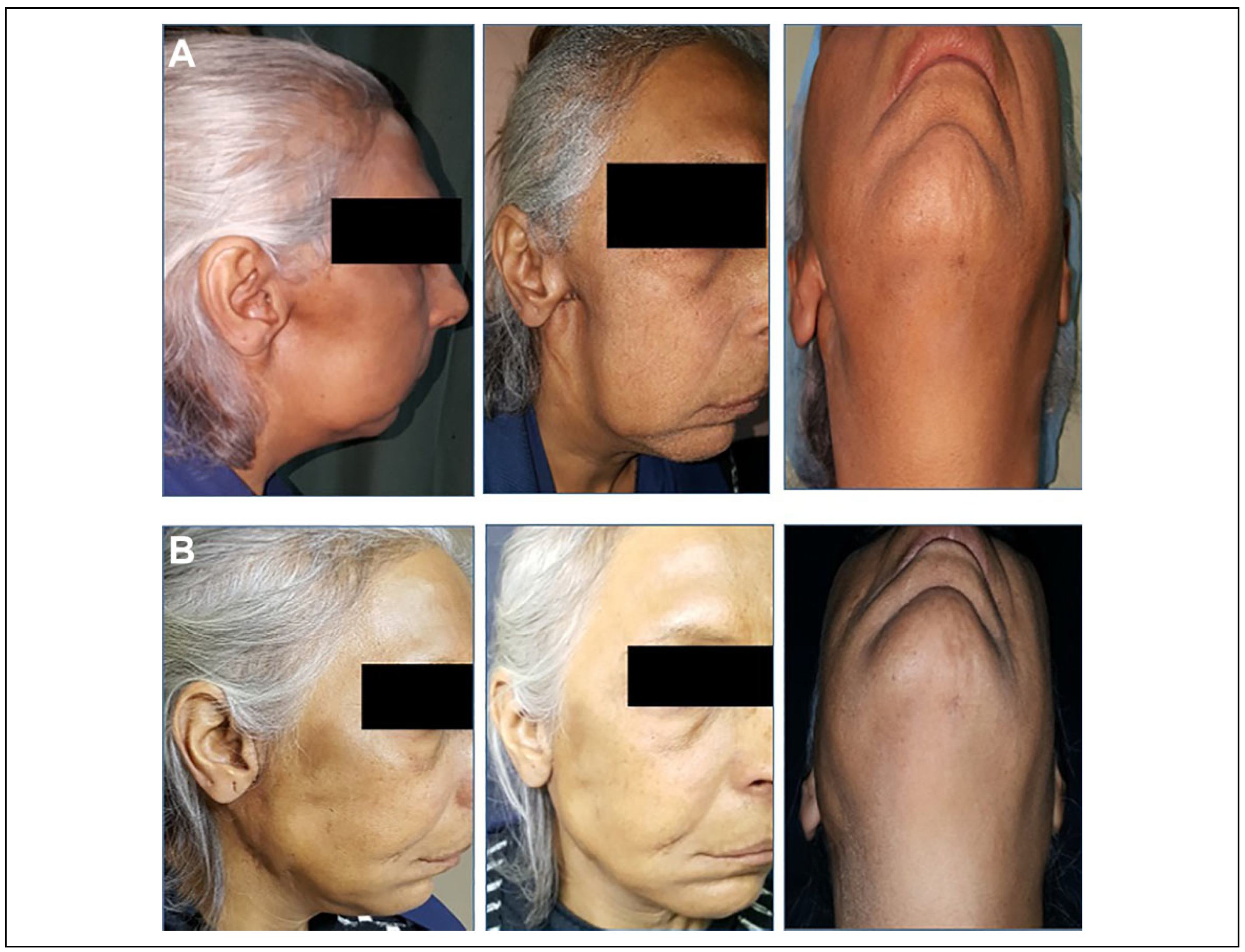
 |
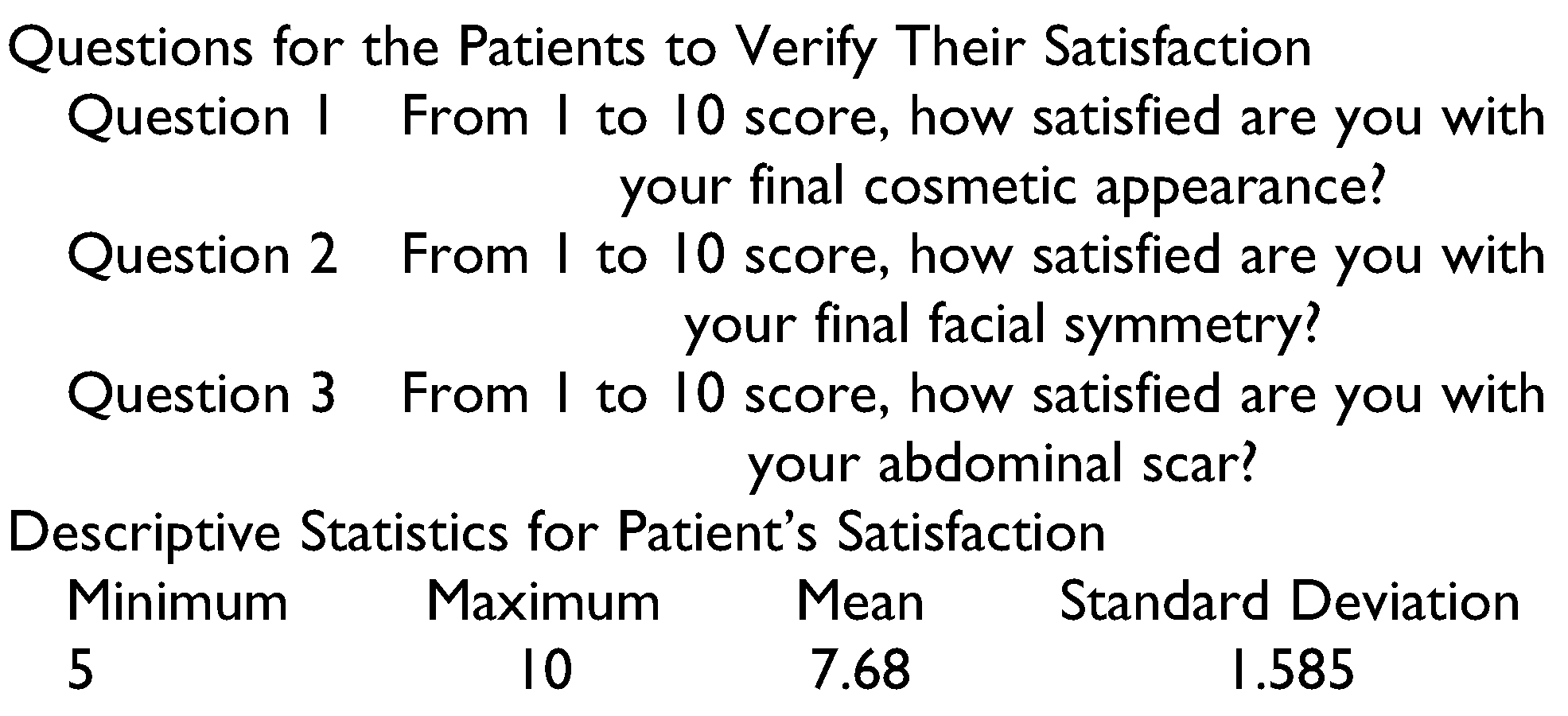 |
 |
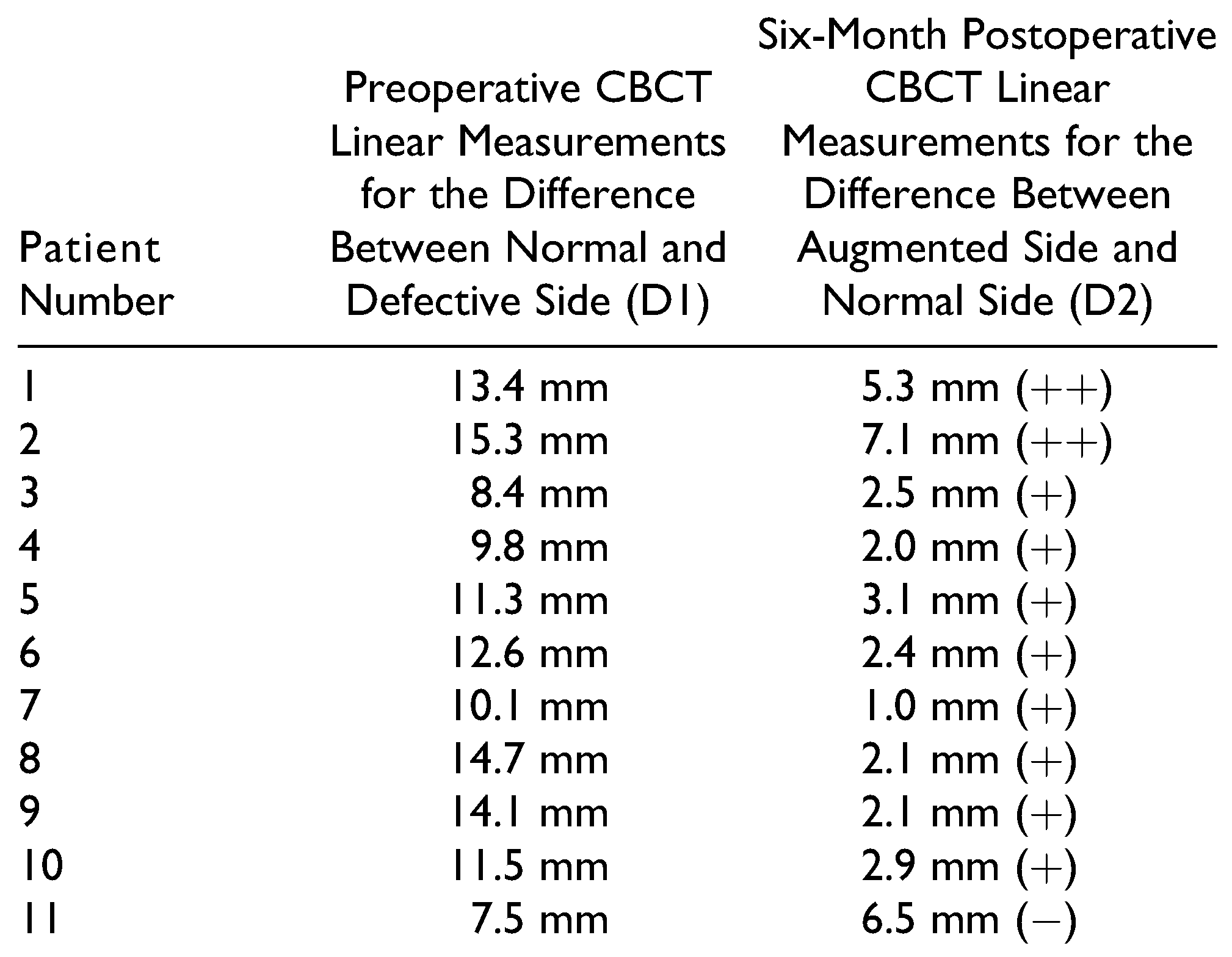 |
© 2020 by the author. The Author(s) 2020.
Share and Cite
Issa, S.A.-A.; Jameel, M.E. Free Dermal Fat Graft for Reconstruction of Soft Tissue Defects in the Maxillofacial Region. Craniomaxillofac. Trauma Reconstr. 2020, 13, 260-266. https://doi.org/10.1177/1943387520910678
Issa SA-A, Jameel ME. Free Dermal Fat Graft for Reconstruction of Soft Tissue Defects in the Maxillofacial Region. Craniomaxillofacial Trauma & Reconstruction. 2020; 13(4):260-266. https://doi.org/10.1177/1943387520910678
Chicago/Turabian StyleIssa, Sabah Abdul-Aziz, and Mustafa Emaduldeen Jameel. 2020. "Free Dermal Fat Graft for Reconstruction of Soft Tissue Defects in the Maxillofacial Region" Craniomaxillofacial Trauma & Reconstruction 13, no. 4: 260-266. https://doi.org/10.1177/1943387520910678
APA StyleIssa, S. A.-A., & Jameel, M. E. (2020). Free Dermal Fat Graft for Reconstruction of Soft Tissue Defects in the Maxillofacial Region. Craniomaxillofacial Trauma & Reconstruction, 13(4), 260-266. https://doi.org/10.1177/1943387520910678



